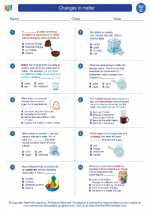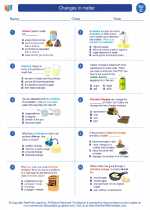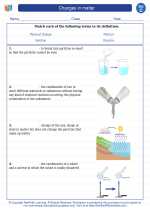Speed
Speed is the measure of how quickly an object moves from one place to another. It is a scalar quantity, which means it only has magnitude and not direction. The formula to calculate speed is:
Speed = Distance / Time
Where:
- Speed is measured in units such as meters per second (m/s), kilometers per hour (km/h), or miles per hour (mph).
- Distance is the total length of the path traveled by an object, measured in units such as meters (m) or kilometers (km).
- Time is the duration it takes for an object to travel a certain distance, measured in units such as seconds (s), minutes (min), or hours (h).
Key Concepts
Here are some key concepts to remember about speed:
- Speed is a measure of how fast an object is moving.
- It is calculated by dividing the distance traveled by the time taken.
- Speed can be constant (unchanging) or variable (changing).
- Objects can have different speeds at different times during their journey.
Units of Speed
There are different units used to measure speed:
- For smaller distances and shorter durations, meters per second (m/s) is commonly used.
- For longer distances and larger durations, kilometers per hour (km/h) or miles per hour (mph) are commonly used.
Calculating Speed
Let's go through an example of calculating speed:
If a car travels 100 kilometers in 2 hours, the speed of the car can be calculated as:
Speed = 100 km / 2 h = 50 km/h
Conclusion
Speed is an important concept in understanding how objects move in the world around us. By knowing the speed of an object, we can better understand and predict its motion.
[Speed] Related Worksheets and Study Guides:
.◂Science Worksheets and Study Guides Third Grade. Changes in matter
Study Guide Changes in matter
Changes in matter  Worksheet/Answer key
Worksheet/Answer key Changes in matter
Changes in matter  Worksheet/Answer key
Worksheet/Answer key Changes in matter
Changes in matter  Worksheet/Answer key
Worksheet/Answer key Changes in matter
Changes in matter  Vocabulary/Answer key
Vocabulary/Answer key Changes in matter
Changes in matter 

 Worksheet/Answer key
Worksheet/Answer key
 Worksheet/Answer key
Worksheet/Answer key
 Worksheet/Answer key
Worksheet/Answer key
 Vocabulary/Answer key
Vocabulary/Answer key

The resources above cover the following skills:
Concepts of Physical Science: A student should understand and be able to apply the concepts, models, theories, universal principles, and facts that explain the physical world. A student who meets the content standard should:
Develop an understanding of the interactions between matter and energy, including physical, chemical, and nuclear changes, and the effects of these interactions on physical systems.